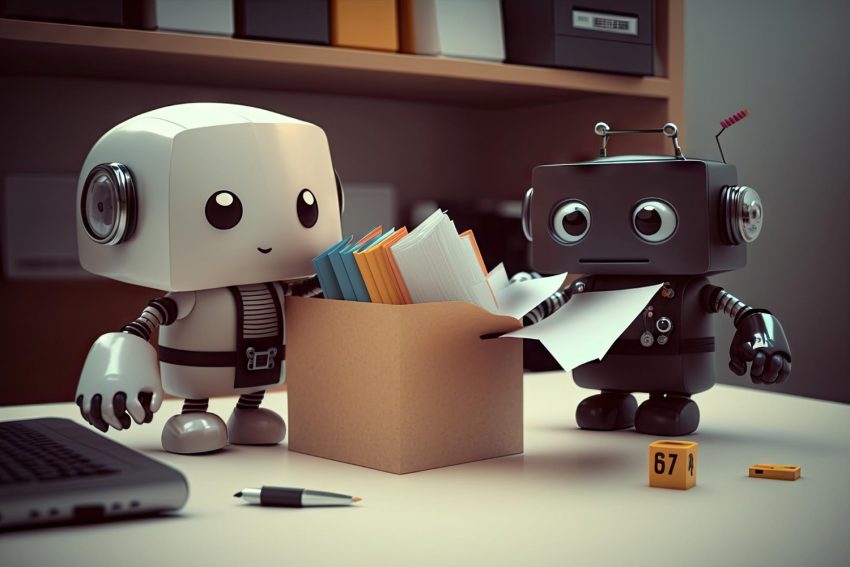In an age where technology is advancing faster than ever, there are limitless possibilities for how we can perform various tasks and solve problems. Looking at the gambling scene, for example, casino slot games are now accessible over the Internet thanks to iGaming – players don’t have to go to a land-based casino to enjoy the thrill their favorite chance-based entertainment provides them with. The same is the case for work, where remote jobs are considered the future of working as there are tons of tools that enable collaboration over the Internet. It’s no wonder the World Wide Web is regarded as the greatest invention of the 20th century.
Now, with the recent emergence of artificial intelligence and robotics, humanity is just tapping into the potential of what might just be one of the greatest inventions of the current generation. The two fields are transforming different industries, including sustainability and social causes meant to preserve Mother Earth to make it more conducive for today’s and tomorrow’s populations. Here’s how AI and robotics are driving the evolution to a more sustainable feature while also exploring potential downsides.
Table of Contents
Energy Optimization
AI algorithms can assist in integrating renewables via smart grids, analyzing energy consumption patterns to balance electrical supply and demand. By the same token, they also aid in optimizing energy usage in various industries such as building, transportation, and manufacturing. As a result, we’ll experience advantages such as:
- development of demand-side flexible markets;
- decreased energy waste, greater efficiency;
- fewer greenhouse gas emissions.
Conversely, activities connected to sophisticated AI technology research and product creation sometimes need enormous computational resources, which can only be delivered by large-scale computer centers. Because of the considerable energy and water necessary to operate and maintain these facilities, they have a high financial and environmental cost.
Environment Conservation and Monitoring
AI technology makes it possible to more efficiently monitor environmental data that may include:
- Air quality;
- CO2 and methane emissions;
- Deforestation;
- Reforestation;
- Animal populations;
- Water levels of mass water bodies.
The WESR (World Environment Situation Room) is an excellent example of such a system. It is a digital platform formed by the United Nations Environment Programme (UNEP) in 2022 that uses AI to analyze complicated datasets and deliver near real-time assessments and forecasts on a variety of environmental parameters.
So, through such AI-powered models, experts can identify patterns and trends, which help conservation efforts and early warning systems like the Common Alerting Protocol (CAP) for natural catastrophes or disasters.
Advancing Healthcare and Well-Being
Artificial Intelligence can improve diagnosis, therapy, health research, medication development, and governmental public health operations such as surveillance and epidemic response. However, as the World Health Organization emphasizes in its advice on the Ethics and Governance of Artificial Intelligence for Health, these technologies must prioritize ethics and human rights throughout their design, implementation, and use.
Reducing Inequalities
By studying satellite photos, AI can assist governments in detecting poverty-stricken places and facilitating worldwide initiatives. Similarly, it can also assist in overcoming educational disparities even though it could potentially cause employment displacements (for example, due to the automation of some activities) and worsen existing inequalities, particularly in underdeveloped nations.
Smart Agriculture
Remote sensing, drones, and predictive analytics driven by AI can improve precision agriculture techniques. They assist in resource optimization, crop health monitoring, disease detection, and overall production improvement while lowering environmental impact.
Additionally, the recently created NASA Acres collaboration is one example of how artificial intelligence may be used to analyze years of satellite data to improve food production and security. Notably, this powerful AI-integrated technology may not be easily accessible to small-scale farmers, resulting in a growing disparity between smaller and bigger producers in more developed nations.
Human-Robot Collaboration
Human-robot collaboration (HRC) can also help to improve the working environment and progress toward the SDGs (Sustainable Development Goals). For example, people can use speech or gestures to connect naturally and operate a robot or operate the robot directly through brainwaves translated to control commands.
Moreover, a genuinely collaborative robot system must also provide simple interaction and operation tools. On top of the collaboration component, a symbiotic robot system requires simplified robot programming methods so that even novice users can readily construct new program sequences or sophisticated job planning. However, the development of such neurological man-machine interfaces is still in its development stages.
AI and Robots for Good in the Digital Age
At a time when digital technologies such as AI and robots are revolutionizing and disrupting industries, economies, and society in general, sustainable advancement is becoming increasingly vital. Technologies like the Internet, AI, cloud computing, and Big Data can help bridge differences between developed, developing, and undeveloped nations, address global concerns like poverty, hunger, and climate change, and improve human health.
